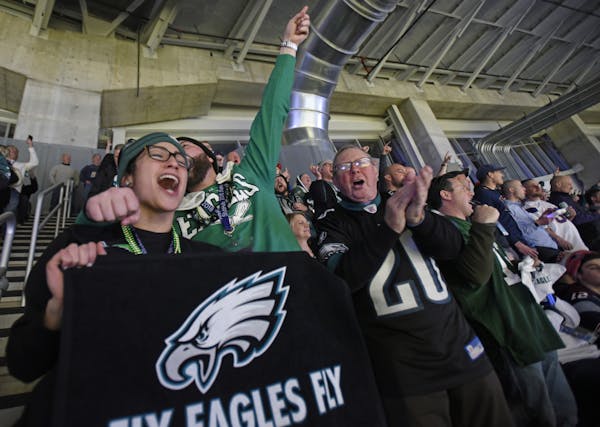Forget the football game. The real drama Sunday night: Would Al Michaels accept Justin Timberlake's challenge to shake his booty at the Super Bowl halftime show?
Timberlake started a hashtag — #AlMichaelsShakeYourBooty — in October, urging the elder statesman of NBC's NFL broadcast team to dance along. Michaels demurred, though analyst Cris Collinsworth did talk the high priest of play-by-play into an awkward little hip-shake during the pregame show. That was probably for the best, since the broadcast was plenty entertaining all by itself.
In the weeks before the game, executive producer Fred Gaudelli and director Drew Esocoff had one wish: That the Super Bowl would be as entertaining as the three previous editions the twosome has produced at NBC. They got the game they wanted, and they did it justice with a broadcast that honored their pledge to keep their focus squarely on the action.
The philosophy that Gaudelli and Esocoff live by — even at the Super Bowl — is that every element of the broadcast has to enhance the game.
"You really have to guard against trying to do too much,'' Gaudelli said. "At the end of the day, everyone is tuning in to see a game. They're not tuning in to see your production.''
The broadcast echoed that restraint, beginning with Michaels. Esocoff called Michaels the ultimate meat-and-potatoes guy, joking that he expected him to forbid vegetables on his plate during meals at Manny's last week. While he and Collinsworth kept it simple, entertaining and educational, NBC added stunning camera work.
Esocoff and Gaudelli love U.S. Bank Stadium and were excited to have it as their Super Bowl canvas. The exterior shots were especially glorious: the stadium amid a downtown skyline drenched in color, glowing purple at the center of a Prince glyph at halftime, and as backdrop for a clever effect that projected images onto an exterior wall.
The production used 106 cameras, ensuring NBC would capture every pivotal moment. Esocoff and Gaudelli, who have worked together for two decades, skillfully and seamlessly wove those scenes into a broadcast that worked.
It can be tricky to get that balance right. But Michaels and Collinsworth, who noted last month that "if Grandma's not having a good time, ratings are going down, '' handled it in Super Bowl veteran style. They quickly reintroduced storylines for new viewers, discussing Nick Foles' rejuvenation and using a nasty closeup view to explain Tom Brady's injured thumb. Mostly, they called the game like two guys who were enjoying it as much as those in front of the flat-screen.
Collinsworth again demonstrated why he is the NFL's best analyst. His immersive preparation left no angle uncovered, and his exuberance reflected a game stuffed with breathtaking plays and momentum shifts.
Early on, Collinsworth predicted that Foles' touchdown catch at the end of the first half — the culmination of a daring play call — "could decide the game,'' an opinion he repeated after the Eagles won. Though he wasn't as accurate with his calls on two Philadelphia touchdowns that survived reviews, he and Michaels illuminated the officials' decisions with a lively discussion of the highly subjective rules, complete with multiple views of the plays.
One moment that could have used more elaboration: the sickening hit that knocked Patriots receiver Brandin Cooks out of the game in the second quarter. Multiple camera angles and super-sharp, slow-motion replay showed the impact to Cooks' head in excruciating detail, highlighting the violence of a game that damages brains.
Michaels and Collinsworth carefully avoided comment. They moved on quickly, too, after noting that Cooks would not return, probably not wanting to be killjoys at the NFL's big party.
The broadcast didn't dwell too much on the weather, nor did it rely on celebrity shots or an overdose of SkyCam views. The on-field drama ensured that wasn't necessary.
"What tension, what emotion, what a game,'' Michaels said when it ended, wisely leaving others to do the dancing.
Travis Kelce named host of 'Are You Smarter than a Celebrity?' for Prime Video
West Virginia transgender sports ban discriminates against teen athlete, appeals court says
U football adds No. 6 in-state recruit to 2025 class, loses 3 to portal
Olympic gold is great, but athletes say some cash to go with it is even better

